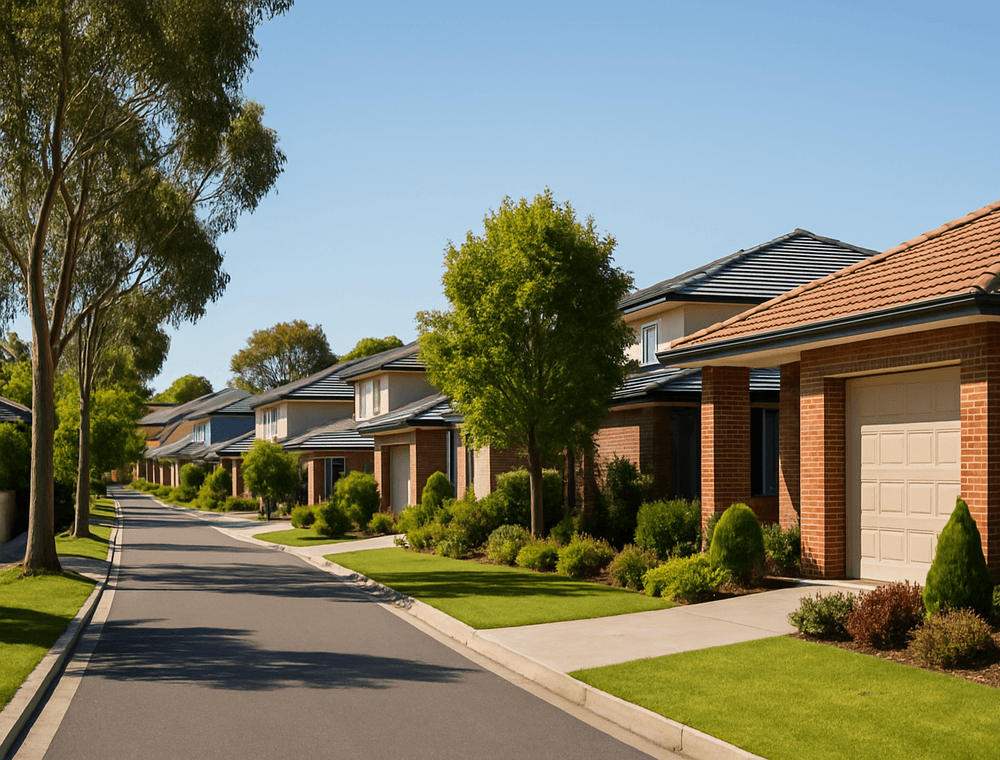Industry
RBA Interest Rates Update
October 2025

October 2025
Introduction
The Reserve Bank of Australia (RBA) has recently opted to hold the official cash rate steady. At the same time, government incentives aimed at first home buyers are being expanded or maintained, adding a new dimension to demand-side dynamics.
For sellers in Melbourne — and real estate professionals working with them — these twin forces are reshaping opportunities and risks. Understanding how they interplay is critical to navigating 2025.
In this article, we’ll:
-
Unpack the RBA’s decision and its reasoning
-
Review first home buyer grants and schemes operating in Victoria
-
Examine how these policy settings influence buyer behaviour
-
Analyse implications for sellers in Melbourne
-
Project the outlook for the next 12–18 months
1. What the RBA’s Decision Signals
The Rate Hold
The RBA’s latest decision to leave the cash rate unchanged reflects a careful balancing act. The bank has previously implemented several small cuts in 2025 (e.g., in February, May and August) to ease monetary conditions, but inflation remains a concern and there is uncertainty in economic data.
By holding the rate steady, the RBA sends a signal that it is in “wait-and-see” mode — ready to respond to inflation or growth surprises, but unwilling to commit to further easing until it sees clearer trends.
Implications of a Rate Hold
-
Borrowing capacity remains constrained: High debt servicing costs limit how much more buyers can stretch their budgets.
-
Risk of softening demand: Some marginal buyers may delay purchases until conditions improve.
-
Support for cautious markets: Sellers may face more negotiation pressure, and pricing must be carefully calibrated.
-
Inflation vigilance: The RBA’s caution reminds markets that any uptick in inflation may stall rate cuts, so sentiment remains delicate.
2. First Home Buyer Grants & Schemes in Victoria
First Home Owner Grant (FHOG)
In Victoria, eligible first home buyers purchasing or building a new home valued at up to $750,000 qualify for a one-off grant of $10,000. This is intended to assist with upfront costs, particularly for new-build homes. It does not apply to established homes, except in limited cases.
Stamp Duty Exemptions / Concessions & Other Incentives
First home buyers may also benefit from stamp duty relief (exemptions or reductions) depending on the purchase value.
Victoria also offers the Victorian Homebuyer Fund, a shared equity scheme contributing up to 25% toward a property purchase for eligible buyers — reducing deposit requirements.
At the national level, the First Home Guarantee (formerly First Home Loan Deposit Scheme) has been expanded. As of October 2025, it allows eligible first home buyers to purchase with a small deposit and without lenders mortgage insurance (LMI).
Effectiveness & Limitations
These incentives:
-
Lower upfront costs
-
Reduce deposit barriers
-
Boost buyer confidence
However, they don’t fully offset high borrowing costs, meaning affordability pressures still weigh on decision-making.
3. Buyer Behaviour Under These Conditions
Strengthening First-Home Buyer Activity
Melbourne has seen a noticeable increase in first home buyer activity. Victoria accounted for around 39% of all loans to new buyers in June 2025, with first home buyer applications up more than a third year-on-year.
These buyers are concentrated in lower-priced segments, making new or modest homes especially competitive.
Two-Speed Market Characteristics
There is increasing evidence of a “two-speed” effect:
-
Entry-level and mid-market homes (suited to first home buyers) are seeing stronger demand
-
High-end or prestige properties are experiencing slower turnover and more negotiation
Reports suggest price growth is softening in premium segments, while modest, well-located homes continue to attract strong interest.
Stock, Listings & Negotiation Power
New listings in Melbourne are above five-year averages, giving buyers more choice and negotiation leverage.
In higher price bands, buyers are pushing harder on concessions, especially where sellers sense weakening demand.
4. Implications & Strategy for Sellers in Melbourne
A. Pricing & Valuation
-
Be realistic: Overpricing discourages interest in a borrowing-constrained environment
-
Use local sales data: Focus on similar recent sales in your area
-
Consider incentive-driven demand: If your property aligns with first home buyer criteria, you may see stronger interest
B. Presentation & Marketing
-
Differentiate: Staging, photography, and repairs make a bigger impact in slower markets
-
Target wisely: Tailor campaigns to first home buyers where applicable
-
Structure for flexibility: Be open to terms like delayed settlement or conditional offers
C. Timing & Speed
-
Market timing matters: List during periods of higher buyer confidence
-
Don’t wait for perfect conditions: Rates may remain steady for some time
D. Suburb & Property Type Selection
-
Focus on inner and middle-ring suburbs with limited supply and strong amenities
-
Avoid oversupplied segments like large apartment developments in fringe areas
-
Prioritise move-in-ready homes: Properties requiring major renovation may underperform
E. Buyer Funnel & Negotiation
-
Pre-screen for finance and inspection readiness
-
Manage expectations through to settlement — including finance approval milestones
-
Consider small buyer incentives to close deals, without compromising value too heavily
5. Outlook for Melbourne: 2025 Into 2026
Price Movement & Growth
Melbourne has recorded four consecutive months of home price growth in 2025, recovering from the softness of 2024.
However, performance will vary:
-
Suburbs with tight supply may continue growing
-
Oversupplied or less desirable areas may lag
Demand Drivers & Risks
-
Migration and population growth continue to underpin demand
-
Supply constraints (labour shortages, high costs, lower approvals) may limit new housing stock
-
Interest rate uncertainty remains a key risk
-
Affordability pressure: Many buyers will continue facing a gap between what they want and what they can afford
For Sellers
-
Entry to mid-market tiers will benefit from first home buyer support and sustained demand
-
Upper-tier properties may see longer days on market and more price negotiation
-
Sellers who are decisive, price strategically, and present their homes well will still find qualified buyers
Broad Market Sentiment
Melbourne appears to be in a cautious upswing. Momentum is returning, but headwinds remain. Sellers who prepare thoroughly — from pricing to presentation — will be best positioned to succeed in this transitioning market.
Got more questions for us?
Whether you’re buying, selling, leasing or just curious, we’re here to help. Get in touch with our Berwick or Officer branches.


